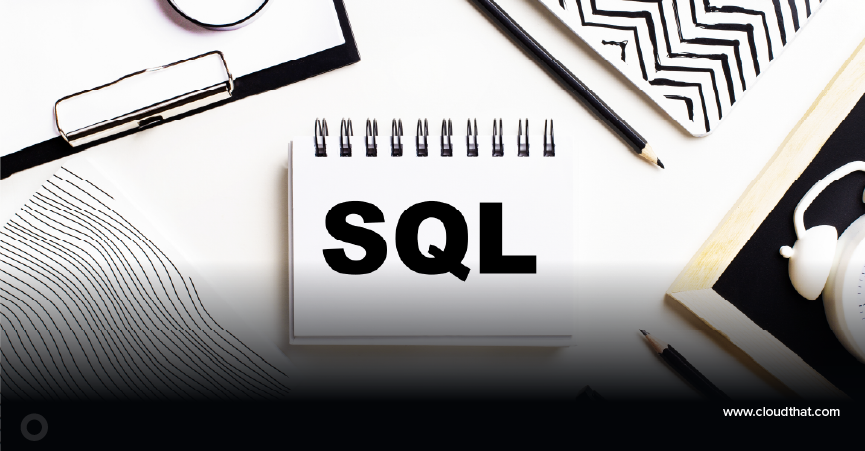|
Voiced by Amazon Polly |
Overview
In the early days of managed services, the game was simple. Lock in a client, monitor a few servers, patch things up, and call it a day. That was the era of the traditional MSP (Managed Service Provider). Fast forward to the cloud-native world, and suddenly, the rules have changed drastically.
Many MSPs that thrived in the data center age are now struggling. Why? Because the traditional MSP model wasn’t built for the cloud. The DNA of cloud computing, its elasticity, complexity, rapid innovation, and the move toward DevOps and automation clashes with legacy MSP mindsets rooted in static infrastructure and hourly billing.
Let’s dig into why traditional MSPs fail in the cloud and what it takes to evolve into a modern cloud MSP.
Pioneers in Cloud Consulting & Migration Services
- Reduced infrastructural costs
- Accelerated application deployment
The Five Reasons Traditional MSPs Fail in the Cloud

- Static Contracts vs. Dynamic Infrastructure
Traditional MSPs typically price services based on infrastructure volume or device count. But in the cloud, infrastructure isn’t static, it scales up and down. A server that runs for 8 hours today might not even exist tomorrow.
Insight: Cloud-native businesses demand pricing models as elastic as the infrastructure they run on. Per-unit or fixed billing can quickly lead to misalignment, cost inefficiencies, and customer churn.
- Manual Processes in an Automated World
Many legacy MSPs rely heavily on manual provisioning, ticket-based workflows, and reactive support models. However, the cloud rewards automation, IaC (Infrastructure as Code), proactive remediation, and AIOps.
Unique Take: If your MSP can’t deploy a fix or provision infrastructure using Terraform, CloudFormation, or at least an API, you’re not just behind, you are obsolete.
- Lack of DevOps and CI/CD Integration
The cloud isn’t just infrastructure, it’s pipelines, containers, GitOps, serverless, and microservices. Traditional MSPs often lack the engineering expertise to plug into a client’s CI/CD lifecycle or advise on DevOps strategy.
Key Insight: Today’s cloud customers expect you to be part of their DevSecOps culture, not an isolated vendor who “keeps the lights on.”
- Monitoring Without Context
Legacy MSPs use general-purpose monitoring tools, alerting on system-level metrics like CPU or memory. But in the cloud, observability requires context: distributed tracing, user behavior, business KPIs, and SLOs.
Pro Tip: Monitoring without business context is noise. Modern MSPs offer intelligent observability using tools like Datadog, New Relic, or Amazon CloudWatch Insights, not just uptime graphs.
- Security as an Afterthought
The traditional MSP security model is perimeter-focused, often based on firewall configurations and antivirus software. Cloud security is identity-driven, dynamic, and continuous.
Example: A traditional MSP may not understand handling AWS IAM privilege escalations, misconfigured Amazon S3 buckets, or cloud-native threat detection tools like Amazon GuardDuty or Azure Defender.
The Blueprint for a Modern Cloud MSP

To succeed in the cloud era, MSPs must transform their service delivery models, skillsets, tools, and culture. Here’s how to build a future-ready MSP:
- Adopt a Cloud-Native Mindset
This starts with letting go of your data center muscle memory. Embrace ephemerality. Design for high availability, autoscaling, and serverless. Think like a cloud architect, not a sysadmin.
Tip: Start every solution with the Well-Architected Framework principles (AWS, Azure, GCP)—they’re not just buzzwords; they’re the foundation of modern cloud operations.
- Productize Your Services
Modern MSPs build repeatable service offerings instead of customizing everything per client. These include:
- Cost Optimization-as-a-Service
- CloudOps Automation Packages
- 24/7 Observability-as-a-Service
- Compliance & Audit Readiness Packs (e.g., for HIPAA, ISO, SOC2)
Unique Edge: Think like a SaaS company, automate, templatize, and scale your services.
- Invest in DevSecOps & SRE Capabilities
Don’t just hire cloud engineers, train them in DevSecOps practices. Introduce Site Reliability Engineering (SRE) to build proactive, automated support capabilities.
Insight: The best modern MSPs have engineers who contribute to CI/CD pipelines, write automation scripts, and deploy policies as code (e.g., using OPA or AWS SCPs).
- Get Certified—Deeply and Broadly
Vendor certifications (AWS, Azure, GCP) are the new currency of credibility. But don’t stop at associate levels—aim for Professional and Specialty certifications, especially in Security, Networking, and DevOps.
Bonus: Build partner competencies like AWS MSP, Azure Expert MSP, and Google Cloud Specializations. They’re tough to earn but set you apart in a noisy market.
- Enable FinOps, Not Just Ops
Cost is a board-level concern. Modern MSPs must deliver cost visibility, optimization recommendations, and cloud financial governance every month.
Secret Weapon: Train a FinOps team. Use tools like CloudHealth, AWS Cost Explorer, or Apptio Cloudability to provide real-time cost intelligence.
Final Thoughts: From Vendor to Strategic Partner
In a cloud-first world, clients don’t want an MSP that manages incidents. They want a strategic partner who accelerates innovation, ensures compliance, optimizes cost, and reduces risk.
The MSPs who survive and thrive will be the ones who reimagine their models for the cloud era. That means becoming builders, advisors, engineers, and architects, not just operators.
In short, evolve or evaporate.
Drop a query if you have any questions regarding MSP and we will get back to you quickly.
Ready to Modernize Your MSP Journey?
Whether you’re looking to launch a new Cloud MSP offering or upgrade your existing one, CloudThat provides the strategy, engineering, and support to get you there fast.
Let’s build the future of managed services together.
Experience Effortless Cloud Migration with Our Expert Solutions
- Stronger security
- Accessible backup
- Reduced expenses
About CloudThat
CloudThat is an award-winning company and the first in India to offer cloud training and consulting services worldwide. As a Microsoft Solutions Partner, AWS Advanced Tier Training Partner, and Google Cloud Platform Partner, CloudThat has empowered over 850,000 professionals through 600+ cloud certifications winning global recognition for its training excellence including 20 MCT Trainers in Microsoft’s Global Top 100 and an impressive 12 awards in the last 8 years. CloudThat specializes in Cloud Migration, Data Platforms, DevOps, IoT, and cutting-edge technologies like Gen AI & AI/ML. It has delivered over 500 consulting projects for 250+ organizations in 30+ countries as it continues to empower professionals and enterprises to thrive in the digital-first world.
FAQs
1. Why is the traditional MSP model no longer effective in the cloud era?
ANS: – Traditional MSPs were designed for static infrastructure and manual processes. In contrast, cloud environments are dynamic and automated and require deep integration with DevOps, security, and financial operations. Traditional MSPs struggle with inefficiencies, misaligned pricing, and skill gaps without adapting.
2. What does it take to become a modern cloud MSP?
ANS: – Modern MSPs must adopt a cloud-native mindset, automate operations, integrate with DevSecOps pipelines, offer productized services, gain deep cloud certifications, and deliver proactive FinOps capabilities. It’s about evolving from operators to strategic innovation partners.
3. How can CloudThat help transition to a modern MSP model?
ANS: – CloudThat provides strategy, tools, and engineering expertise to modernize MSP offerings. As an AWS Advanced Consulting Partner with multi-cloud experience, they help MSPs adopt automation, security-first designs, and scalable service models tailored to today’s cloud-native demands.

WRITTEN BY Sana Pathan
Sana Pathan is the Head of Infra, Security & Migrations at CloudThat and also leads the Managed Services and FinOps verticals. She holds 7x AWS and Azure certifications, spanning professional and specialty levels, demonstrating deep expertise across multiple cloud domains. With extensive experience delivering solutions for customers in diverse industries, Sana has been instrumental in driving successful cloud migrations, implementing advanced security frameworks, and optimizing cloud costs through FinOps practices. By combining technical excellence with transparent communication and a customer-centric approach, she ensures organizations achieve secure, efficient, and cost-effective cloud adoption and operations.


 Login
Login


 April 22, 2025
April 22, 2025 PREV
PREV










Comments